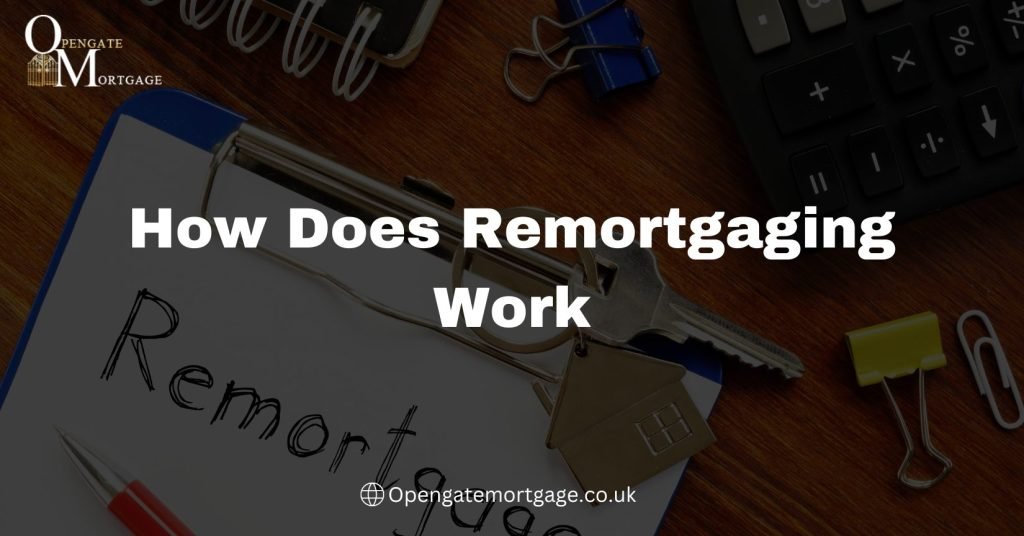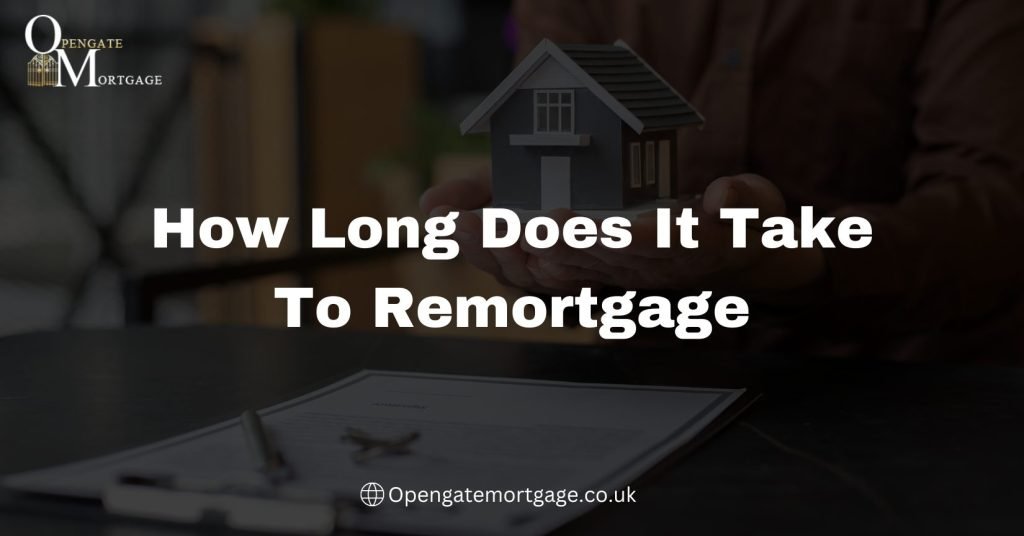As an investor looking to build your property portfolio, understanding buy to let mortgages is essential. A buy to let mortgage allows you to purchase an investment property with the intention of letting it out to tenants. Instead of living in the property yourself, you rely on the rental income to cover the mortgage payments. For many investors, buy to let mortgages are an attractive option to generate monthly income and long term capital gains. However, they do come with additional responsibilities as a landlord. In this article you will come to know that How Does a Buy To Let Mortgage Work

What Is a Buy to Let Mortgage?
A buy to let mortgage is a type of mortgage specifically designed for purchasing a property as an investment, with the intention of renting it out. Unlike a residential mortgage, a buy to let mortgage typically requires a larger downpayment, often 25% of the property’s value or more. Interest rates are usually higher as well.
How Buy to Let Mortgages Work
- You find an investment property you want to purchase and rent out. This could be an apartment, condo, house, etc. Make sure the rental income will cover the mortgage payments, taxes, insurance and maintenance costs with some left over as profit.
- You apply for a buy to let mortgage, providing details on the property, your financial situation, and your plan for managing the rental. The lender will evaluate if the investment is likely to be profitable based on factors like the local rental market, your experience as a landlord, and your credit score.
- If approved, you can purchase the property. You become responsible for all costs associated with the property like property taxes, insurance, repairs, and management fees in addition to the mortgage payments.
- You find tenants, market the property, collect rent, and maintain the property. Managing a rental property requires time and effort to do well. If done right, the rental income should cover all your costs and provide an additional stream of income.
- You can sell the property at any time, paying off the remaining mortgage balance. The tenants’ lease may need to be honored by the new owner or allowed to expire before selling. Many buy to let mortgages charge early repayment fees if sold within a certain time period, often 3-5 years, so you need to consider this.
With the potential for good returns over the long run, buy to let mortgages and investment properties can be an attractive option for some. However, there are risks to consider and it requires the ability to properly manage a rental to be successful. If done right though, it can provide an ongoing source of income for years to come.
How Much Can I Borrow With a Buy to Let Mortgage?
With a buy to let mortgage, the amount you can borrow depends on several factors, including your income, credit score, loan-to-value ratio, and property value. In general, you can expect to borrow a lower percentage of the property value compared to a residential mortgage.
As an investor, lenders will consider your rental income in addition to your personal income when determining how much you can borrow. Typically, you need a minimum 15-20% down payment for a buy to let mortgage. The higher your down payment, the lower your interest rate and monthly payment will be.
Your credit score also impacts how much you can borrow. Most lenders require a score of 620 or higher for a buy to let mortgage. The higher your score, the more favorable lending terms you can expect to receive.
The loan-to-value ratio refers to the size of your mortgage as a percentage of the property’s value. For buy to let mortgages, lenders typically cap this at 75-80% to account for the additional risk. The lower your LTV, the less risky the loan is for the lender.
The property value itself sets the upper limit on your potential mortgage amount. Lenders need to ensure the rental income can adequately cover your mortgage payments and expenses. More valuable properties allow for higher mortgages, assuming the other factors also align.
In summary, by putting down at least 20% for a down payment, maintaining a good credit score, keeping your LTV at 75-80% or less, and purchasing an investment property with strong rental demand, you can maximize the amount you can borrow for your buy to let mortgage. With the right property and financing in place, you’ll be well on your way to building your rental property portfolio.
Interest Rates and Repayment Options
Interest rates and repayment options are two of the most important factors to consider when taking out a buy to let mortgage.
Interest Rates
The interest rate determines how much you pay to borrow the money for your investment property mortgage. Lower interest rates mean lower monthly payments and less interest paid over the lifetime of the loan. Shop around at different banks and lenders to find the most competitive rates. Compare fixed and variable rate mortgages to determine which option suits your needs and risk tolerance best.
With a fixed rate mortgage, the interest rate stays the same for the term of the loan, typically 25 to 30 years. This provides payment stability but may charge a higher overall interest rate. A variable or adjustable rate mortgage usually offers a lower initial interest rate that can change over time based on the market. Payments may go up or down, introducing some uncertainty. Many lenders offer fixed terms within a variable mortgage, such as rates that are fixed for 3 to 10 years.
Repayment Options
The two most common repayment options are capital repayment mortgages and interest-only mortgages. A capital repayment mortgage pays off both the interest and part of the capital (the amount borrowed) each month. By the end of the term, the entire loan amount is repaid. Interest-only mortgages only require monthly interest payments for a fixed period, such as the first 5 or 10 years. After that, payments increase to pay off the capital and interest.
Interest-only mortgages usually have lower payments initially but higher payments later on. They are riskier but can work well if rental income is likely to increase substantially over time. Capital repayment mortgages provide more security but higher initial payments. Choose the option that best fits your financial situation and investment goals.
Other factors like fees, loan-to-value ratio, and term length will also impact a buy to let mortgage. Make sure you understand all components fully before proceeding with a mortgage on an investment property.
Requirements to Qualify for a Buy to Let Mortgage
To qualify for a buy to let mortgage, you must meet several requirements. As with a residential mortgage, you will need to provide proof of income and a good credit score. However, there are additional criteria specific to buy to let mortgages.
You must have a satisfactory deposit, typically 25% of the property value. The lender will evaluate your loan-to-value ratio to ensure you have sufficient equity in the property. A lower LTV often means a lower interest rate and better terms.
Your income must be able to cover the monthly mortgage payments, even if the property is vacant. The lender will assess your ability to repay the loan, referred to as an affordability calculation. They will evaluate your income sources and ensure your rental income projections are realistic based on the local market rates.
You must have a plan for managing the property. As a landlord, you will be responsible for maintenance, repairs, tenant screening, rent collection, and other property management duties. The lender will want to see that you have considered all the responsibilities that come with being a landlord. They may ask about your prior experience managing rental properties.
Your credit score is evaluated to determine your interest rate and eligibility. Most lenders require a minimum score of 620 to 640 for a buy to let mortgage. The higher your score, the lower your interest rate is likely to be. Check your credit report for any errors before applying and take steps to improve your score if needed.
Providing the necessary documentation and meeting these key requirements will put you in a good position to qualify for a competitive buy to let mortgage. Be prepared for the lender’s questions about your financials, property management plans, and experience as a landlord. With the right preparation, you can obtain financing for an investment in property that generates solid rental income.
Pros and Cons of Buy to Let Mortgages
A buy to let mortgage allows investors to purchase a property specifically to rent out. There are several pros and cons to consider before taking out a buy to let mortgage.
Pros
- Steady income stream. Rental income from tenants can provide regular cash flow for the investor.
- Property appreciation. As the property value increases over time, the investor can benefit from capital gains when selling.
- Tax benefits. Expenses from the rental property, like repairs, maintenance, and loan interest, can offset the tax burden on rental income.
Cons
- Responsibility as a landlord. The investor takes on the responsibilities of managing the property and tenants which can require time and resources.
- Void periods. There may be periods when the property is vacant between tenants, resulting in a loss of rental income during those times.
- Risks of bad tenants. Although background and credit checks are performed, there is a possibility of renting to tenants who fail to pay rent or damage the property.
- Interest rate risk. If interest rates rise substantially, it can negatively impact the investor’s cash flow from rental income.
- Lack of liquidity. The funds used as a down payment on the property are tied up and not easily accessed in case of emergencies. Selling the property can take time.
A buy to let mortgage provides an opportunity for investors to generate income from rental property. However, there are risks and responsibilities to consider before purchasing an investment property. Performing due diligence on the property and tenants, starting with a lower risk property, and planning for unexpected costs or vacancies can help maximize the rewards of a buy to let mortgage while minimizing the risks. With the proper precautions taken, buy to let mortgages have the potential to be a lucrative investment over the long run.
Conclusion
As you have learned, buy to let mortgages provide landlords and investors an opportunity to finance the purchase of property intended for rental income. While the process shares some similarities with a standard residential mortgage, there are key differences to understand regarding eligibility, interest rates, and tax implications. With the potential for solid returns over the long run, buy to let mortgages can be an attractive investment option if you go in with realistic expectations and understand the responsibilities that come with being a landlord.
By educating yourself on the details and working with experienced professionals, you can feel confident in navigating the buy to let mortgage landscape. The keys are starting with a solid investment property, securing a competitive mortgage product, and maintaining the professionalism to establish a long-term rental business.
People Ask Questions About How Does a Buy To Let Mortgage Work
What is a buy-to-let mortgage?
A buy-to-let mortgage is a type of loan designed for individuals or investors who wish to purchase a property with the intention of renting it out to tenants. Unlike a residential mortgage, where the borrower lives in the property, buy-to-let mortgages are specifically tailored for rental properties.
Who can apply for a buy-to-let mortgage?
Buy-to-let mortgages are typically available to individuals who meet certain criteria set by lenders. Most lenders require applicants to be at least 21 years old, have a good credit history, and already own a residential property. Some lenders may also consider the applicant’s income, rental potential of the property, and the overall risk associated with the investment.
What is the minimum deposit required for a buy-to-let mortgage?
The minimum deposit for a buy-to-let mortgage usually ranges from 20% to 40% of the property’s value. The exact amount varies between lenders, and a larger deposit can often result in more favorable interest rates and terms.
How is the loan amount and interest rate determined?
The loan amount and interest rate depend on various factors, such as the property’s value, the rental income potential, the applicant’s financial history, and the chosen mortgage product. Generally, lenders assess the rental income that the property is expected to generate to determine the maximum loan amount they are willing to offer.
Can I use personal income to support my buy-to-let mortgage application?
Yes, some lenders may consider personal income as part of the assessment process, especially if the expected rental income is not sufficient to meet their affordability criteria. However, the primary focus is usually on the rental income and potential of the investment property.







